[Norman Gilliland, Host, Wisconsin Public Radio]
Welcome to University Place Presents. I’m Norman Gilliland.
There’s a long tradition of music evoking images, specific pictures and one of the greatest practitioners of that tradition was Claude Debussy, the French composer who flourished in the last years of the 19th century and the early years of the 20th. Here to give us some insights into the genius of Debussy and share some of his music with us is Catherine Kautsky, professor of music at Lawrence University, and author of the book –
[slide featuring the book cover of Professor Kautskys book]
– Debussys Paris, Piano Portraits of the Belle Epoque. Welcome to University Place Presents.
[Catherine Kautsky, Professor, School of Music, Lawrence University]
Thank you, Norman, it’s a pleasure to be here.
[Norman Gilliland]
What was it that made Debussy so original? He must have had some kind of inspiration leading into this originality.
[Catherine Kautsky]
I’m sure he did, although it’s interesting that he came from a family –
[slide featuring a portrait photo of Claude Debussy]
– with no education and was always sort of completely on his own individual path, but surely, he grew up hearing, for instance the music of Chopin in – in Paris –
[Catherine Kautsky]
– that’s where Chopin was – had been living 50 years earlier, and that use of the piano with its pedaled sounds and sounds all blurring together to some degree, though not nearly to the degree that Debussy did, surely had an impact.
And then, to his eternal regret, Richard Wagner had an enormous impact on him as well. His use of harmony and his blending of various mediums, the use of text, the use of music, the use of staging. That was – that was something that Debussy for the longest time couldn’t resist. He made great, you know, pilgrimages to hear Wagner’s operas, and then in the end, he – he turned it all overboard and said, No, no, no, the Germans don’t have anything to teach us, it’s only the French. But it took a while, and he had absorbed a lot by that time.
[Norman Gilliland]
And he had a lot of company with his fellow French composers in that, too.
[Catherine Kautsky]
He did. There was a long-lasting animosity dating back to the Franco-Prussian War, and certainly heading into World War I, as well.
[Norman Gilliland]
Another French phenomenon seems to have been and going back all the way to the Baroque if not further, colorful titles for –
[Catherine Kautsky]
Yeah.
[Norman Gilliland]
– pieces of music, and Debussy fell right into that tradition.
[Catherine Kautsky]
Yeah, it’s interesting, isn’t it? Bach doesn’t – doesnt name most of his pieces, but you look at Couperin, Rimbaud –
[Norman Gilliland]
Yes.
[Catherine Kautsky]
– and suddenly you’re looking at cuckoos and mysterious barricades and all sorts –
[Norman Gilliland]
Right.
[Catherine Kautsky]
– of interesting things.
Yes, but with Debussy I’d say it’s more helpful than with any other composer I’ve ever encountered in that his titles tell us so much about what he was seeing and hearing in – at Paris at that time. So, they – they provide a kind of social history of the entire epoch, of the Belle Epoch and – and of the years before and after as well.
[Norman Gilliland]
And that would include things ranging from fashions of the time, you know, what women, in particular, were wearing, the dances of the time and Debussy kind of wraps it all together with this wonderful sort of –
[Catherine Kautsky]
Yes.
[Norman Gilliland]
– subtlety and delicacy.
[Catherine Kautsky]
What people were reading, the nationalism that we talked about with the sort of anti-German sentiment, his last prelude, you hear the strains of Marseilles. Certainly, the – the art that people were looking at. Even the children’s books that were in fashion at that time. Golliwog was a children’s book. So yes, he’s – hes just he’s – hes a sponge, hes absorbing it all. Archeological digs, sculptures that appear in the Louvre. It’s everything.
[Norman Gilliland]
So, his piece, Voiles is also evocative of specific things that were happening in Debussy’s time.
[Catherine Kautsky]
Yeah, Voiles is – is nice because it offers an opening into so many different avenues. If you look at the photo –
[slide featuring a photo of Loie Fuller surrounded by veils]
– of Loie Fuller, you’ll see that she’s ensconced in veils. She was a dancer from the United States who immigrated to Paris and as much more successful there with her dances of veils. And the shape of those veils, the arabesques that they form was sort of a fixation among poets and painters and Debussy as well.
[Catherine Kautsky]
So, he wrote a lot of pieces that are filled with arabesques, as well as pieces titled Arabesque, and if you look at the veils, you might think of this piece, The Maiden with the Flaxen Hair that sounds like this.
[Catherine Kautsky playing The Maiden with the Flaxen Hair on a grand piano – a dreamy classical piano piece]
[Catherine Kautsky, as she is playing the piano]
You hear that down motion –
[return to the slide featuring a photo of Loie Fuller surrounded by veils]
– answered right away by the up motion. All these curvaceous ideas the art nouveau painters loved those, and Debussy loved –
[Catherine Kautsky, no longer playing the piano]
– them as well because they weren’t straight lines, they didn’t go to a logical end. Instead, they curved round and round. So, here this piece we think is about Loie Fuller’s veils. We don’t know for sure because – cause Voiles can mean Sails, too. But Loie Fuller choreographed several of Debussy’s pieces, so we know that they knew each other, and we know that she was sort of a star in – in popular theatrical venues in Paris at this time. So, as you listen to the piece, you can – you can think about that photo on the enormous kind of mystery that she ensconced herself with, and you hear it in the music as well, cause Debussy chooses to build the whole piece around whole tone and pentatonic scales.
So, it starts like this.
[Catherine Kautsky playing a fast piano scale]
That’s the whole tone scale, and later on you hear this.
[Catherine playing dreamy piano music]
And that’s a pentatonic scale, and one of the things that’s so important about Debussy is that he’s moving away from the tonal system that had sort of dominated the last two centuries of – of quote, classical music. Right, and he’s looking for alternatives, and he finds them all over the place.
One place he finds them is in different kinds of scales, and in sounds that evoke the gamelan. And so, we’ll here more of that in the next piece, but you hear it already here.
[Norman Gilliland]
Voiles, by Debussy.
[Catherine Kautsky playing Voiles (Prelude No.2, from Preludes, Book 1) by Debussy on the piano – a slow, dreamy classical piano piece]
[Norman Gilliland]
Well as you say, Cathy, you can hear the pentatonic in there which is reminiscent of oriental themes, and then the whole tones which may have more of a harking back to earlier times, maybe. Even ancient sounding music, which I gather was also a bit of an interest –
[Catherine Kautsky]
Yeah.
[Norman Gilliland]
– in French composers, Satie and Debussy, and I suppose Ravel, too.
But also with this Orientalism, it seems to have been a – a major theme not just in terms of, you know, Chinese music but also in Japan, in particular, seems to have been an interest of these French composers.
[Catherine Kautsky]
For sure, and actually the term Orient at that time encompassed an enormous area, not just the area we think of now, but Northern Africa, Spain even, Southeast Asia, so when we talk about Orientalism and its impact of on the painters and the poets and the composers, we’re talking to some degree about colonialism as well, because those are the areas that French – that France was taking over as colonies. But to start out with Japan, yes, and if you look the image –
[slide featuring the cover art for La Mer, a Japanese illustration of large waves in the ocean with a mountain in the background between the crest of the waves]
– that Debussy chose for the cover of La Mer, it’s a Japanese print, so Japanese prints had arrived in Paris fairly recently at this point. Debussy wrote the next piece –
[Catherine Kautsky]
– I’m gonna play, Estampes in 1903, and he was influenced both by those prints and also by the World Expositions that had taken place in Paris, so especially the first one in 1889 that he saw where he encountered a gamelan for the first time –
[Norman Gilliland]
That Indonesian instrument.
[Catherine Kautsky]
– and he saw – yeah, this – this symphony of gongs, orchestra of gongs, and in the piece you’re gonna hear next, you’ll hear things like.
[Catherine playing gong-like upbeat piano music on the piano]
You know, you – you just hear those gongs being struck. You hear the percussive element, but also the pedal creates the kind of resonance that they have, and also the scale that he uses. Here again he uses pentatonic scale.
[Catherine playing a fast pentatonic scale on the piano]
And he’s trying to imitate the scales of the gamelan, so he was enormously influenced by those other cultures, and by the – the kinds of both musical and visual cues he could take from them. So, this – this piece Estampes, the first one – first movement of the three is called Pagode, so hes – hed been looking at the – he didn’t ever travel to these places –
[Norman Gilliland]
Sure.
[Catherine Kautsky]
– but he’d been looking at pagodas at this World Exposition, and you encounter pagodas all over in Japan and in China but also in Cambodia and Thailand and Vietnam, so that’s the first piece.
The next piece is kind of interesting ’cause it’s called Soiree Dan Grenade.
[Norman Gilliland]
So, you mention the Spanish themes or influences –
[Catherine Kautsky]
Exactly!
[Norman Gilliland]
– are very strong with many French composers.
[Catherine Kautsky]
Yeah, and what’s interesting here is that it’s not just Spain in general, it’s southern Spain; so, Grenada is where the Alhambra is. It’s in southern Spain.
[Norman Gilliland]
With more of a Moorish influence.
[Catherine Kautsky]
Exactly, so here we’re talking about Arab cultures and that’s of course what the French were also encountering when they went to Morocco and Tunisia and Algeria, the – the countries that they were taking over essentially, as their sort of far-off satellites. So, you can see so many paintings by people like Matisse and Renoir and even before that Delacroix, Jerome, where they’re looking at the sites, the colors, the – the women above all –
[slide featuring an illustration of an Arabian belly dancer]
– of these far-off places, and they’re looking with a kind of envy, and you – you hear – you’ll hear in this second piece which starts – starts out already –
[Catherine on-camera playing slow melodic on the piano]
– with this habanera rhythm and this very seductive tune.
[Catherine continuing to play seductive tones on the piano]
[Catherine Kautsky]
Right, very chromatic, and somehow insinuating, and you just – you can just imagine these beautiful women who they were encountering and who they found so available.
So, yes, this – this goes from one culture to another.
The third piece is – is in a sense French because it makes use of two children’s folk tunes, but even children for Debussy are kind of exotic. He – he writes a lot of music for and about children, and I think he envies their innocence and the way that they too seem to escape from – from the sort of, the drudgery of daily life and live in – in a kind of fairy tale world, in a world of make believe, and that’s what all of this is, of course. He didn’t really see pagodas; he didn’t really see harems of women; and he wasn’t a three-year-old child anymore. But he wished for all of those things. He said he lived among apparitions, and this in – this piece, in a way, is a compendium of those apparitions.
[Norman Gilliland]
So, this would be Gardens in the Rain?
[Catherine Kautsky]
Yes, that’s the third piece.
[Norman Gilliland]
And you mentioned La Mer, of course The Sea. And I was gonna say that water is another thing –
[Catherine Kautsky]
Yes.
[Norman Gilliland]
– that Debussy just was fascinated by and so great at evoking in piano music.
[Catherine Kautsky]
Absolutely, and I think again because of the mystery, right? Because it – its clear and yet it distorts. It reflects light. It’s always in motion. It has all these different kinds of energy. So, yeah, water was a perennial fascination, and in fact, he said that if he hadn’t been a musician, he would’ve been a sailor.
[Norman Gilliland]
[laughs] He actually wore when he met the composer, Albeniz, Spanish composer –
[Catherine Kautsky]
Yeah.
[Norman Gilliland]
– came to visit Debussy, he didn’t recognize Debussy, because Debussy was dressed as a sailor.
[Catherine Kautsky]
Well, there you have it.
[Norman Gilliland]
He was that much into it.
[Catherine Kautsky]
I think his father wanted him to be one, so he thwarted his father’s ambitions, but he carried them with him.
[Norman Gilliland]
So, for Estampes, which means sort of an etching or engraving.
[Catherine Kautsky]
That’s right, it means – it means basically a print, and so the title is about Japanese prints.
[Norman Gilliland]
So, it’ll be Pagodas, and then Soiree in Grenada, and then –
[Catherine Kautsky and Norman Gilliland together]
Gardens in the Rain.
[Catherine Kautsky]
That’s right. All wonderful images.
[Catherine playing Estampes: Pagodes by Debussy on the piano]
[Catherine playing Estampes: La soiree dans Grenade by Debussy on the piano]
[Catherine playing Estampes: Jardins sous la pluie by Debussy on the piano]
[Norman Gilliland]
Some very evocative writing there from Claude Debussy in –
[Catherine Kautsky]
Yes.
[Norman Gilliland]
– his Estampes, the musical engravings taking us variously to pagodas –
[Catherine Kautsky]
Mm-hmm.
[Norman Gilliland]
– wherever they may be in the Orient exactly, and to the Alhambra –
[Catherine Kautsky]
Yup.
[Norman Gilliland]
– in Spain and then just now to the gardens in the rain.
Another thread that seems to run, not just through French music, but music of composers who have lived in Paris such as Stravinsky and Petruska, there’s this fascination with – with clowns and the commedia dell’arte.
[Catherine Kautsky]
Yes.
[Norman Gilliland]
How does that manifest itself in the writings of Debussy?
[Catherine Kautsky]
Yeah, I think that’s such an interesting question. It’s one of the questions that made me write the book because commedia dell’arte was always this mystery. Like, who would care, right? [laughs]
[slide featuring and illustration of clowns in circus]
All these characters with masks, but they cared so much. I think there were so many things about the commedia, which, for those who don’t know, was a – a – a group of itinerant Italian actors who pantomimed their way across Italy to different towns and eventually migrated France and were actually much more successful in France than they were in Italy.
[Catherine Kautsky]
And by the 19th century, they were a huge attraction in France. There were very famous people, mimes, who – who, especially the one who played Pierrot. So, I think they liked the fact, the composers, liked the fact there weren’t words. Right, music doesn’t have words and it tells you a lot, so if can express everything through pantomime, then you’re – youre coming close to that same sort of art. Also, I think they liked, especially with Pierrot –
[slide featuring an illustration of a clown smoking a long pipe]
– his fickleness, his changeability, the fact that you never knew quite who he was. So, his face is covered in white powder. Most of them were covered in masks. And they’re constantly transforming before you. At one moment, he’s – hes aggressive and he’s sticking needles in a woman who’s betrayed him. At another moment, he’s – hes sad and lovelorn and sort of a lost soul. And I think it’s that changeability that – that appealed so much.
[Norman Gilliland]
That, even in the pieces you just played, the Estampes, there was some changeability, some rapid changes –
[Catherine Kautsky]
Yes.
[Norman Gilliland]
– stops and restarts.
[Catherine Kautsky]
Yes, without any connecting tissue, right? And I – I think that’s one of the characteristics of 20th century music altogether –
[Norman Gilliland]
So true.
[Catherine Kautsky]
– not just Debussy, right? That – that you’re trying to evoke a sort of, a world of the subconscious rather than the conscious, right? Of the way our mind works internally, not the way we present it to the world.
[Norman Gilliland]
I think that’s why the French, including Debussy, were so fascinated by the writings of Edgar Allen Poe.
[Catherine Kautsky]
Yes, absolutely.
[Norman Gilliland]
Subconscious.
[Catherine Kautsky]
Absolutely, and the – the story of Edgar Allen Poe’s that – that I think is most evocative of what appealed to them maybe is the one that – that’s called, that’s about the pervert – the perverted imp, the Imp of the Perverse.
[Norman Gilliland]
The Imp of the Perverse.
[Catherine Kautsky]
It’s called the Imp of the Perverse. But it’s – its the story of – of somebody who does something that he knows is going to ruin him and he can’t help himself. And so, it’s this – it’s this sort of sense that we’re inhabited by other voices, by other people, by – by desires that we have no control over. Of course, this is also the age of Freud.
[Norman Gilliland]
Sure.
[Catherine Kautsky]
Right? And so, I think that that – thats what appealed about Poe too and in his world, it was often a nightmare world, but it’s a world of dreams; it’s again, a world of apparitions, things that wouldn’t really happen but might happen inside your head.
[Norman Gilliland]
So, if we look at this capriciousness that you find with these masked characters –
[Catherine Kautsky]
Yes.
[Norman Gilliland]
– in the Commedia dell’arte, how does that manifest itself in Debussy?
[Catherine Kautsky]
So, the – the next piece I wanted to play for your is – is one of the Etudes, which are among the last pieces he wrote. He didn’t write that much during World War I. He lived till the war was almost over, but he wrote very little because – both because he was suffering from cancer but also because the war was so devastating for him. But he wrote a set of 12 etudes for the piano, which are amongst his greatest works.
[Norman Gilliland]
So, were these made technical studies then –
[Catherine Kautsky]
Yeah, sort of.
[Norman Gilliland]
– isnt that what an etude implies?
[Catherine Kautsky]
I mean, they were probably taken after Chopin’s etudes –
[Norman Gilliland]
Mm-hmm.
[Catherine Kautsky]
– but they’re quite different from Chopin’s etudes. And the one I’m gonna play for you is a great example of that sort of fickleness that – that it starts out in the most sort of lush, beautiful way.
[Catherine playing the beginning of Pour les arpeges composes on the piano]
– its called Pour les arpeges composes and you hear these beautiful arpeggios, and they just roll. And then all of a sudden in the middle you get the –
[Catherine playing the upbeat middle section of Pour les arpeges composes on the piano]
– which just feels like it has absolutely nothing to do with the other material.
[Norman Gilliland]
It feels clown-like, though.
[Catherine Kautsky]
And then – it’s clown-like, exactly. Exactly, it’s like he’s suddenly at a circus, and then – then he recedes, and he becomes the Debussy that – that we know and love.
But I, the Debussy I know, and love is actually this one who is capable of those amazing transitions without any preparation, that somehow nevertheless seem to work, so they must mimic our minds.
[Norman Gilliland]
So, this is called?
[Catherine Kautsky]
This is called Pour les arpeges compose. So, it’s an etude about arpeggios, which means you hear broken chords throughout, except when you go to the circus.
[Norman Gilliland]
[laughs] Here we go, Pour Les –
[Catherine Kautsky]
And even there, you hear a few of them, but they sound like they’re strummed by guitars, they’re not that sort of lush sound of the piano.
[Norman Gilliland]
Bring on the Arpeges Compose.
[Catherine Kautsky]
Okay.
[Catherine playing Etude No. 11 Pour Les Arpeges Compose on the piano]
[Norman Gilliland]
When is an etude not an etude? Well, when it’s written by Claude Debussy. That’s – thats something else entirely, isn’t it?
[Catherine Kautsky]
Yeah, I mean it’s still – its still hard like an etude’s supposed to be, but it’s all camouflaged, yeah.
[Norman]
A lot – a lot of color there.
[Catherine Kautsky]
Yeah.
[Norman Gilliland]
Like Chopin, of course, we said Debussy wrote etudes and like Chopin, Debussy also wrote preludes. As did of course Johann Sebastian Bach, which is probably where Chopin got the inspiration.
[Catherine Kautsky]
Right.
[Norman Gilliland]
And Debussy got his inspiration for writing preludes from Chopin?
[Catherine Kautsky]
Probably. I love the idea that the preludes were preludes to nothing. I mean when – when Bach –
[Norman Gilliland]
[laughs] A long tradition by Debussy’s time.
[Catherine Kautsky]
Yeah, I mean when, exactly, when Bach wrote a prelude it was a prelude to a fugue and it prepared you for that fugue, it got that key in your ear. Chopin threw that convention overboard and for Debussy it was perfect because he loved the idea that everything was open-ended. So, the preludes all end with, the title’s always at the end, but it’s preceded by an ellipsis sign as if you don’t quite know if the piece is really over and you’re not quite sure if this is the title. There’s always this sort of, you want to live in a universe of ambiguity is basically what’s going on and so a prelude that’s just a fragment is perfect.
[Norman Gilliland]
Well, yes, that’s also a popular tradition earlier among the Romantics.
[Cathy Kautsky]
Right.
[Norman Gilliland]
Fragments were popular –
[Catherine Kautsky]
Yes.
[Norman Gilliland]
– not just in music but in literature too –
[Catherine Kautsky]
Exactly.
[Norman Gilliland]
– and in architecture, too, come to think of it.
[Catherine Kautsky]
Yeah.
[Norman Gilliland]
So, when Debussy sits down to write a prelude, though, what should we expect? Any consistency from one prelude to the next?
[Catherine Kautsky]
No, not very much. I mean, there are actually some key relationships that are kind of interesting, but basically the preludes more than any of the other pieces are the pieces whose titles tell us what’s going on in Paris. Um, so, the next piece that I’m gonna play is called General Lavine – excentric and it’s about a clown who was another, like Loie Fuller, another emigre from the United States, not successful there –
[slide featuring an illustration of the clown, General Lavine – excentric]
– but greatly successful as a clown at the circus, and you can see this image of him. There are stories that he played the piano with his toes, that he – and he – he did other – he juggled, and he stood on stilts, but the toes, that’s the – thats the most remarkable.
[Norman Gilliland]
Are we gonna get that effect in the Debussy? [laughs]
[Catherine Kautsky]
I’m so sorry. It would’ve been perfect on TV, but I’m – Im really sorry to disappoint you.
[Norman Gilliland]
We’ll use our imaginations.
[Catherine Kautsky]
But – but you do certainly get – you get a lot of things in this prelude; you get happy clowns, and you hear these chords at the beginning.
[Catherine playing the upbeat beginning of General Lavine – excentric on the piano]
And then you hear them again in the middle and they sound like this.
[Catherine playing the slow, unsteady middle measures of General Lavine – excentric]
So, that clown has gotten quite melancholy about something or other. And then this same idea of those triads come back like this.
[Catherine playing the staccato upbeat end section of General Lavine – excentric]
Which is Camp Town Races in camouflage.
[Catherine playing part of Camp Town Races on the piano]
[Norman Gilliland]
Oh sure.
[Catherine Kautsky]
Right.
[Norman Gilliland]
Yeah, how about that?
[Catherine Kautsky]
So, that takes us to the other aspect of this. It’s about the circus, but he says it’s to be played in the style of a cakewalk, and minstrel shows were all the rage in Paris at this time. This is written in the early part of the 20th century. They’d arrived in the – a – a few years before that, and not only minstrel shows but the cakewalk which came with the minstrel shows was enormously popular as both as – and – and the reasons take us into all sorts of not happy associations with racism, because of course the minstrel shows came along with blackface and with lots of really degrading stereotypes of blacks, and the cakewalk itself was seen as this sort of liberation from the traditional dances of France. If you think about courante and the barre and the minuet, they’re all so proper, right?
[Norman]
So true.
[Catherine Kautsky]
And they belonged to the monarchy. And all of a sudden, you have this cakewalk where people are prancing and kicking, and the steps aren’t all preordained. People loved it! But it came with – with the association that Africa, where the blacks came from, was the land of wild animals and primitive cultures and people who knew no rules.
[Norman Gilliland]
Well, Africa was still being discovered at this point, too?
[Catherine Kautsky]
Well –
[Norman Gilliland]
Much of it unknown.
[Catherine Kautsky]
– it was being colonized, too.
[Norman Gilliland]
That too, yeah.
[Catherine Kautsky]
Right. And this isn’t that long after Darwin’s Theory of Evolution, so you have this whole association with the monkeys, so there’s a lot of very distasteful – a lot of very distasteful associations with cakewalks, and you know, Debussy was probably no more culpable than 99.9% of his countrymen, but they were all quite racist and quite happy to see themselves as imbibing this culture but nevertheless remaining vastly superior to it in their advanced civilization.
[Norman Gilliland]
But if we strip this music down to its basic, without all those associations, a cakewalk is just a dance.
[Catherine Kautsky]
That’s right, and if you listen to this piece, you can’t help but being very enamored of General Lavine.
[Norman Gilliland]
General Lavine – excentric
[Catherine playing General Lavine – excentric (Prelude No. 6, from Preludes Book 2) by Debussy on the piano]
[Norman Gilliland]
Living up to his name, the Eccentric.
[Catherine Kautsky]
Very eccentric, right.
[Norman Gilliland]
General Lavine.
[Catherine Kautsky]
Yes.
[Norman Gilliland]
Among the works of Claude Debussy. Now if we look, Cathy at all these things we’ve experienced with the music of Debussy, the rich harmonic language, and this changeability that you’ve demonstrated more than once now. How compatible is all of that kind of language, that originality, with text?
[Catherine Kautsky]
Well, I think that Debussy was extraordinarily sensitive to text, and I – I think it’s especially notable since he didn’t get any formal schooling. So, he grew up in this household where his parents weren’t well-educated. He got farmed out a lot. He finally went to the conservatory starting at the age of 10, but he never got a real, certainly not a literary education. On the other hand, he’s obviously incredibly sensitive to words, so his songs are among his greatest works, certainly his opera, Pelleas et Melisande, is one of the very greatest operas ever written, and if you read his letters, they’re beautifully, beautifully written, so I think of him like Schumann, who’s the other composer that I think of as enormously interested in words, and of course Schumann’s father was a book publisher, so no wonder, right –
[Norman Gilliland]
Sure.
[Catherine Kautsky]
– but with Debussy, it’s even more remarkable. So, yes, very, very keyed in to language.
[Norman Gilliland]
And so, have works by Debussy been put to text?
[Catherine Kautsky]
Ah, well, he writes songs –
[Norman Gilliland]
Sure.
[Catherine Kautsky]
– that put other people’s words to text, and he actually did write a play, interestingly an anarchist play at one point.
[Norman Gilliland]
So popular at the time, I guess.
[Catherine Kautsky]
Right. So, he tried his hand at writing himself, but in general he wrote the text for a few songs, especially one – one sort of famous one at the – very much at the end of his life about children who had been ruined by the war who don’t have houses anymore. But the – the piece I wanna play last for you is a piece that incorporates lots of different texts. It’s by a living composer, a woman named Jessica Krash, who lives in the Washington, D.C. area, and I actually asked her to write me a piece sort of giving some sense of the 21st century looking back at Debussy’s harmonic language and also incorporating words.
So, she chose, and I said, Oh you can use this letter or that. But instead, she chose to take a collection of – of texts from all different places. Some of the quotes are from song texts. Some are from newspaper articles at the time. Some are from letter he wrote. But I think all in all, you get a real sense of, particularly of the sort of ambiguity that Debussy lived in. You know, the – the first quote she uses is, They – they don’t, from a song text, “They don’t seem to believe in their happiness. Right? So, yeah, maybe you could be happy, but you don’t really believe you’re happy. What does that mean?
[Norman Gilliland]
Sounds very fin de sicle, doesnt it?
[Catherine Kautsky]
It does, doesn’t it? And she uses quotes about moonlight. Debussy hated the sun; it was much too bright and glaring.
[Norman Gilliland]
Oh, one of his most famous pieces, Clair de Lune.
[Catherine Kautsky]
Right, that’s right. And Pierrot, who’s associated with –
[Norman Gilliland]
De Lune.
[Catherine Kautsky]
– Clair de Lune, is always associated with the moon and the Schoenberg Pierrot Lunaire, right?
[Norman Gilliland]
Sure.
[Catherine Kautsky]
And the association of lunaire with lunacy, right? The work.
[Norman Gilliland]
Absolutely.
[Catherine Kautsky]
So, you could go in so many different directions with these texts, but – but I think they’re really evocative and the way she uses his sort of ambiguous harmonies along with these somewhat perplexing texts I think tells you a lot about Debussy.
[Norman Gilliland]
And this is called?
[Catherine Kautsky]
This is called Debussy Chez Moi. Chez moi meaning in French –
[Norman Gilliland]
At my place.
[Catherine Kautsky]
– At my place. Exactly, yeah.
[Catherine playing Debussy Chez Moi by Jessica Krash on the piano with the following lyrics]
They don’t seem to believe in their happiness. And their song mixes with the moonlight. They don’t seem to believe. . . in their happiness. And their song mixes with the moonlight. And the moon descends. And the moon descends on the temple that was. Didn’t Pierrot shake his fist at the moon? Are we also puppets, heads of wood? Heads of wood, stomachs of bran. Marionettes! We have nothing to say to each other. We have nothing. So close, so close are we. To each other. My melancholy thoughts. Of fizzled fireworks. No longer want to stop morning for trespassed Sundays. My soul dies from too much sun. My soul dies from too much sun. Music, don’t you know, is a dream from which the veils have been lifted. His sounds and images turn in the evening air.
[Norman Gilliland]
Some of the composer’s own titles worked into the text there, Debussy.
[Catherine Kautsky]
Yeah. Yeah.
[Norman Gilliland]
Chez Moi, Debussy at my place –
[Catherine Kautsky]
Yeah.
[Norman Gilliland]
– work of Jessica Krash.
Well, Catherine Kautsky, it’s been a great pleasure immersing ourselves for the hour in the work and mind of Debussy and of course, to his times, too, in the Belle Epoch.
[Catherine Kautsky]
Thank you so much, it’s been a pleasure to talk to you.
[Norman Gilliland]
I’m Norman Gilliland and I hope you can join me next time around for University Place Presents.
Search University Place Episodes
Related Stories from PBS Wisconsin's Blog

Donate to sign up. Activate and sign in to Passport. It's that easy to help PBS Wisconsin serve your community through media that educates, inspires, and entertains.
Make your membership gift today
Only for new users: Activate Passport using your code or email address
Already a member?
Look up my account
Need some help? Go to FAQ or visit PBS Passport Help
Need help accessing PBS Wisconsin anywhere?

Online Access | Platform & Device Access | Cable or Satellite Access | Over-The-Air Access
Visit Access Guide
Need help accessing PBS Wisconsin anywhere?

Visit Our
Live TV Access Guide
Online AccessPlatform & Device Access
Cable or Satellite Access
Over-The-Air Access
Visit Access Guide
 Passport
Passport

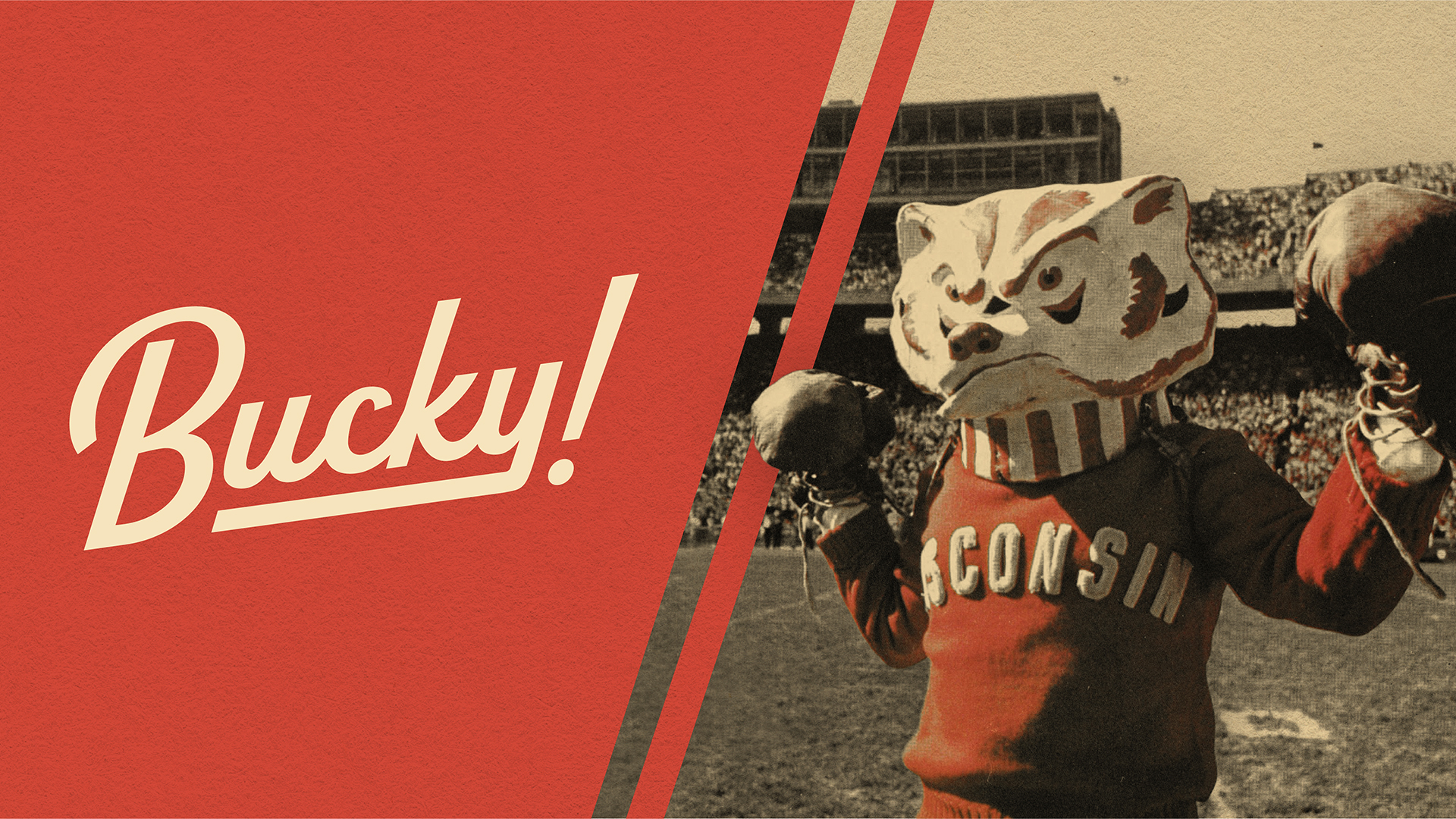

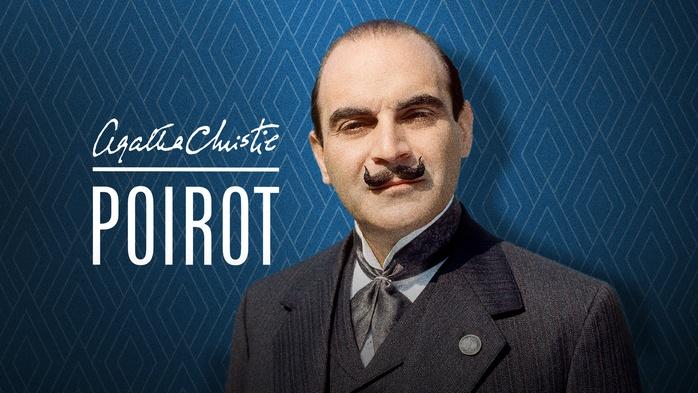


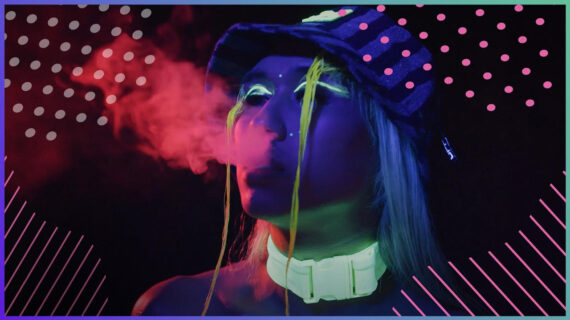

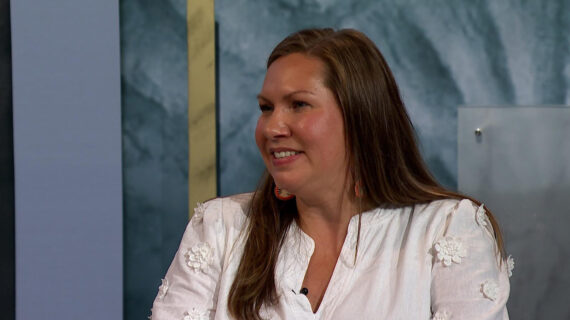
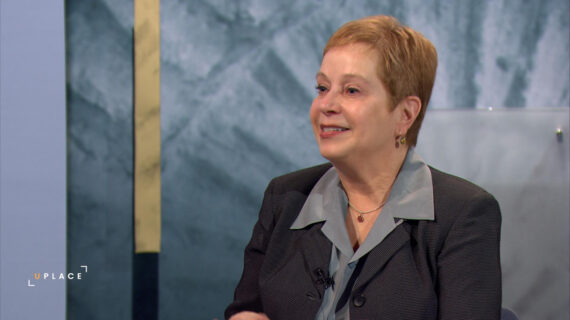

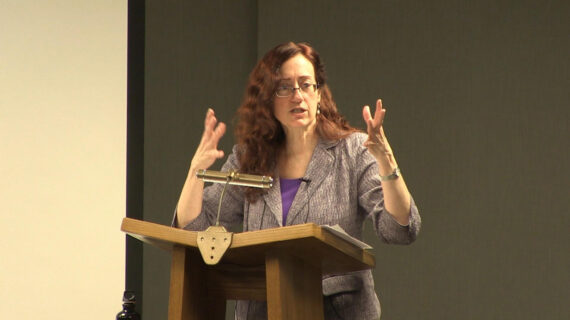



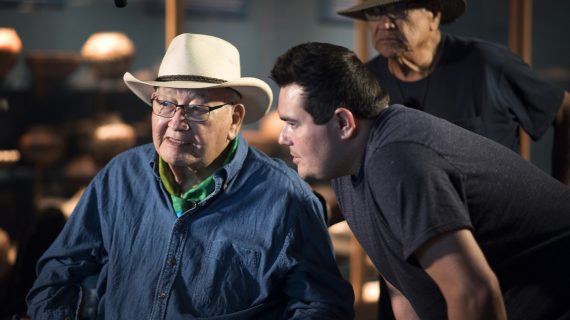


Follow Us